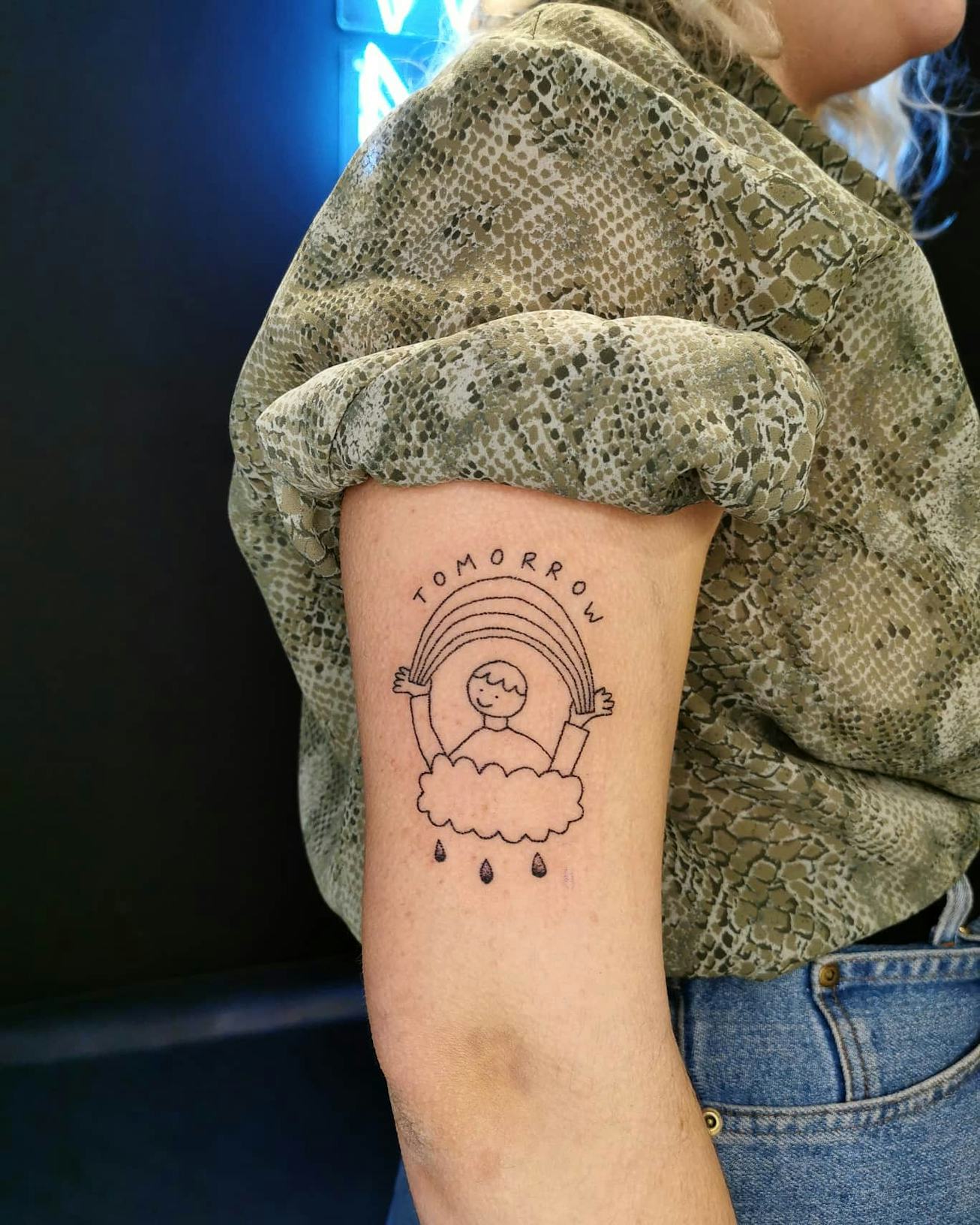
Beauty
What You Need To Know Before Getting A Hand-Poked Tattoo
Spoiler: You shouldn't DIY them at home.
Tattoos — whether completed by machine or hand — present a unique opportunity to turn your skin into a literal work of art. While the idea of wearing permanent art on your body is beautiful, there are a number of things you should consider before ever sitting down in the tattoo parlor chair. For those thinking about getting a hand-poked tattoo, also known as stick-and-poke tattoos, NYLON turned to experts to find out everything you need to know about your first foray into this type of ink.
But before artists Kelly Thorn of Brooklyn's Welcome Home Studio and UK-based artist Dommy Sullivan dive into every detail of the application process, there is one thing that should probably be addressed right away. Despite the DIY feeling often associated with the concept of hand-poked tattoos, the experts agree that you shouldn't trust your friend or an amateur artist with giving you a tattoo. Beyond having to potentially deal with a blotchy constellation or some crooked text on your arm for the rest of your life, serious skin and health consequences can occur when anyone who isn't a trained tattoo artist attempts to ink your skin. "Please go to an actual artist," Sullivan cautions. "They’ll know what they’re doing and have proper hygiene and equipment. You’ll come out with a design you’re happy with rather than something that you might regret later on."
Before you schedule an appointment with a professional, here's everything you need to know about getting your first hand-poked tattoo.
Find An Artist With Experience In Hand-Poked Tattoos
It's important to find and decide on a tattoo artist that aligns with what you're envisioning for your ink. Sullivan suggests turning to Instagram, noting that many artists will use the social media platform as a place to share their work.
While completed tattoos are always worth admiring, Thorn suggested looking at all of the artist’s social media content, including healed ink and accompanying work spaces in the background. Ensure that the artist's space is sanitary and that their tattoo license is prominently displayed. Online reviews can also be a good way to find out about other people’s experiences with a particular artist.
If a social media search and online searching doesn't yield results, Thorn recommends turning to friends and maybe even strangers. "The best way to find a reputable artist, hand-poked or otherwise, is through word of mouth, by asking a friend where they got their tattoo that you like, asking the person in line in front of you where they got their tattoo. Some of my favorite clients have come to me this way, and it’s so nice to think of the web of friends and new acquaintances that I’ve tattooed," Thorn says. Chances are, that person at the coffee shop will be flattered that you like their ink and went out of your way to ask them about it.
Understand The Process Of Getting A Hand-Poked Tattoo
According to Thorn, there are differences between getting a regular tattoo and a hand-poked tattoo. As for the overall inking process, hand-poked tattoos tend to hurt less and heal faster. “Although pain is completely subjective, they tend to hurt less because the process is slow and quiet,” she tells NYLON. “They tend to heal faster because it is less traumatic to the skin, as we form the line-up of a dot next to a dot next to a dot, and because of this, they generally take longer to apply than an electric tattoo.”
In fact, the difference in pain and process can make hand-poked tattoos a great option for your first choice of ink, Sullivan suggests. While hand-poked tattoos can take longer to complete, the less intense application method can be somewhat gentler than an average tattoo process. "Hand-poke is great for if you're a bit nervous about getting tattooed. As it’s just the needle being used without any electric machines, there’s no noise, so it can be quite relaxing sometimes," Sullivan says. "I usually recommend going for an arm or leg placement if it’s your first tattoo, as the body tends to be a more painful spot for most people."
Prepare For Hand-Poked Tattoo Aftercare
Just because the artwork is complete and the appointment is over doesn't mean your job is finished. Much like a machine tattoo, hand-poked ink also requires aftercare. However, Sullivan and Thorn note that the healing time for a hand-poked tattoo is typically quicker than a traditional tat. Within a week or two, your tattoo should be healed up and ready to show off.
When it comes to caring for a hand-poked tattoo, Thorn suggests daily washing and moisturizing. "The aftercare of a hand poked tattoo is a dream, especially if it’s mostly outlined," she said. "I use RXDerm, a sterile matte bandage that looks like it’s not even there, so you can still show it off (indoors and in the shade — no sunlight for six months, and always use SPF after healed) while it’s healing."
Follow Thorn and Sullivan on Instagram for more ink inspiration.
Experts:
Kelly Thorn, tattoo artist at Brooklyn's Welcome Home Studio
Dommy Sullivan, UK-based tattoo artist
This article was originally published on